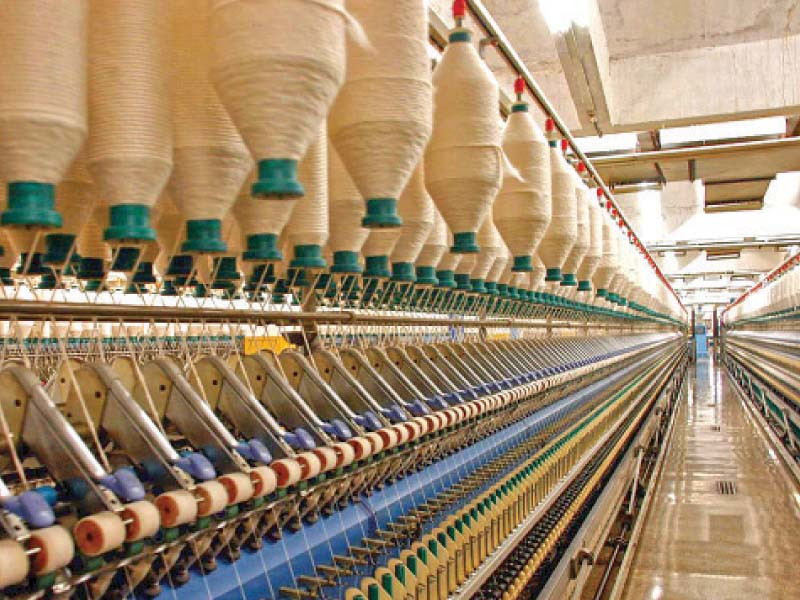
There is growing frustration among the value-added textile industries of Karachi and exporters have expressed disappointment over the government’s indecisiveness about the resumption of
gas supply.
“Value-added textile industrialists of Karachi are upset with the government for its callousness towards their appeal and SOS calls conveyed to Prime Minister Shehbaz Sharif and relevant ministries regarding resumption of gas supply,” Value Added Textile Forum Chief Coordinator Jawed Bilwani said.
Many industries of Karachi were not operational and incurring losses as they had been deprived of the legitimate gas share for the last several decades, he added.
“PM Shehbaz is following in the footsteps of his predecessors, as he too is ignoring the industries of Karachi while on the other hand he is holding meetings with the spinners association of Punjab,” he regretted.
“Textile exporters may face significant losses in July due to energy shortages,” said Topline Securities CEO Saad Ziker. “Seemingly, the shortages in the energy sector will continue over the next few months due to the non-fulfillment of
RLNG contracts.”
Also, the recent monetary policy decision, the increase in interest rate on Long-Term Financing Facility (LTFF) and Export Finance Scheme (EFS) would squeeze the overall textile sector as it would reduce borrowing, which would disturb the working capital requirement, he said.
Two days ago, the Economic Coordination Committee (ECC) also approved the revised rate of gas, lifting it from $6.5 per mmbtu to $9 per mmbtu, without consulting the textile associations of Karachi, Bilwani said.
Indigenous gas supply to the export industries in Sindh will be charged Rs1,350 per mmbtu ($6.6 per mmbtu), up 65%, and RLNG will be supplied at $9 per mmbtu to SSGC consumers, which the industrialists term “unjustified and unacceptable”.
“Textile exports will decline this year for sure,” said Taurus Securities Head of Research Mustafa Mustansir. “Not only is the industry struggling with energy issues, but key export destinations like the US, the UK and the EU are also likely to see a drop in consumer spending due to record inflation.”
Adding to the situation, the SBP has jacked up the Export Finance Scheme and LTFF rates.
The previous government had approved RLNG tariff at $6.5 per mmbtu for the export-oriented industries but that was implemented only in the SNGPL jurisdiction in the north.
Despite repeated requests and reminders, it was never given to the export-oriented industries in areas covered by SSGC.
Furthermore, the RLNG industrial consumers were charged Rs1,361 per mmbtu in January 2021, later it was enhanced to Rs4,626 per mmbtu till June 2022, Bilwani said.
In the previous financial year, the government disbursed Rs81 Billion against subsidy to provide RLNG at a competitive tariff in Punjab only.
This year, the government allocated Rs40 billion but passed on the benefit to the export-industries of Punjab, creating competition between the export-industries within the country,
he said.
“The subsidy is given from taxpayers’ money. But despite paying the highest revenue and taxes to the national exchequer, all successive governments ignore Karachi, which is the heart of
the economy.”
Aba Ali Habib Securities textile analyst Ali Asif, however, expressed hope that textile exports would maintain their growth to around $19-20 billion in FY23, despite the fact that the textile industry had been overshadowed by inconsistent and increasing RLNG prices, followed by an increase in EFS and LTFF rates.
Bilwani questioned about the discriminatory treatment with the export-oriented industries of Karachi, mainly the value-added textile export industries and with the city that generates 70% revenue for the national exchequer, contributes 54% to the national exports and 52% in textile exports.
Published in The Express Tribune, July 9th, 2022.
Like Business on Facebook, follow @TribuneBiz on Twitter to stay informed and join in the conversation.

1731494851-0/BeFunky-collage-(51)1731494851-0-405x300.webp)
















COMMENTS
Comments are moderated and generally will be posted if they are on-topic and not abusive.
For more information, please see our Comments FAQ